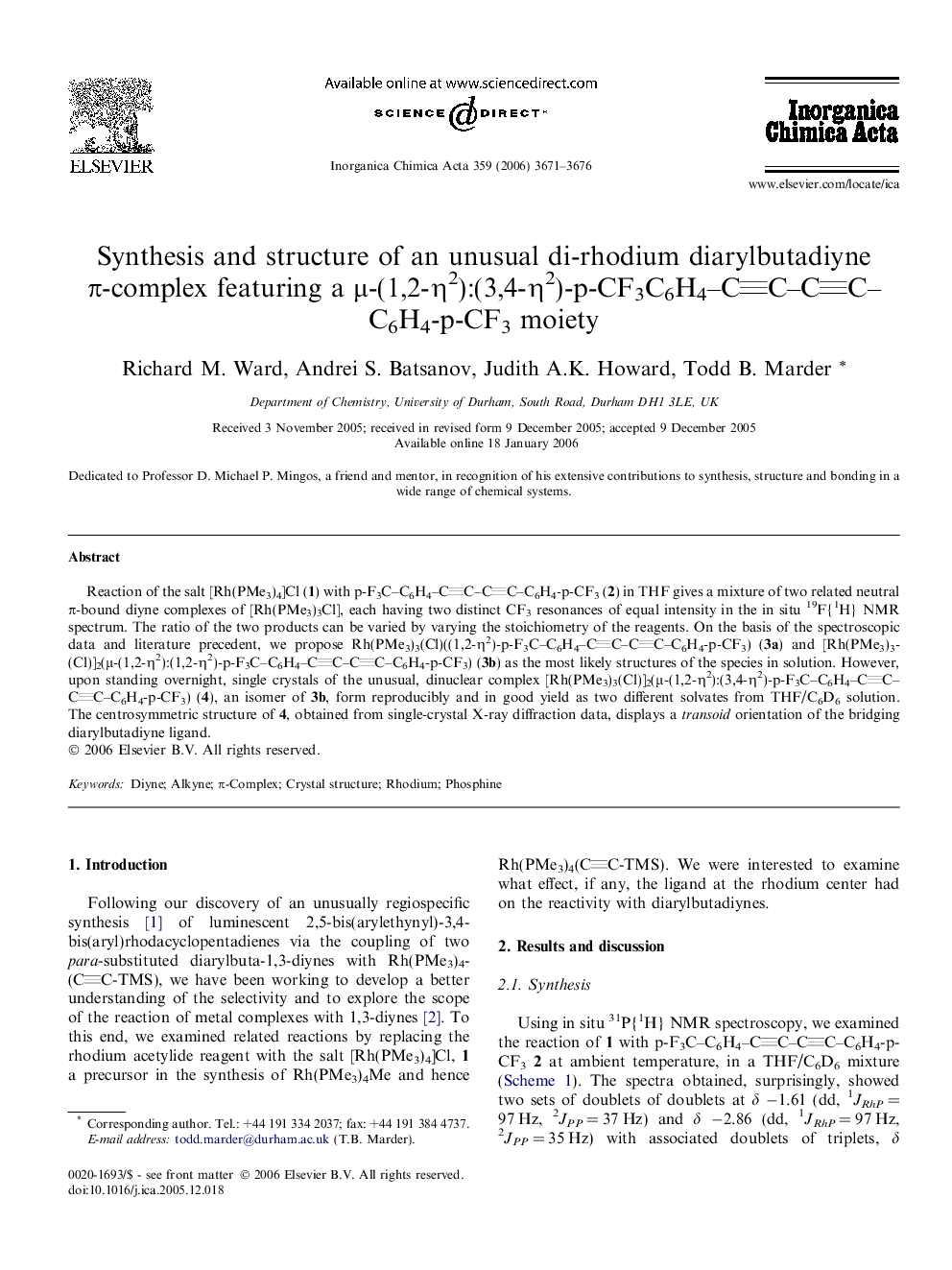| Article ID | Journal | Published Year | Pages | File Type |
|---|---|---|---|---|
| 1312975 | Inorganica Chimica Acta | 2006 | 6 Pages |
Reaction of the salt [Rh(PMe3)4]Cl (1) with p-F3C–C6H4–CC–CC–C6H4-p-CF3 (2) in THF gives a mixture of two related neutral π-bound diyne complexes of [Rh(PMe3)3Cl], each having two distinct CF3 resonances of equal intensity in the in situ 19F{1H} NMR spectrum. The ratio of the two products can be varied by varying the stoichiometry of the reagents. On the basis of the spectroscopic data and literature precedent, we propose Rh(PMe3)3(Cl)((1,2-η2)-p-F3C–C6H4–CC–CC–C6H4-p-CF3) (3a) and [Rh(PMe3)3(Cl)]2(μ-(1,2-η2):(1,2-η2)-p-F3C–C6H4–CC–CC–C6H4-p-CF3) (3b) as the most likely structures of the species in solution. However, upon standing overnight, single crystals of the unusual, dinuclear complex [Rh(PMe3)3(Cl)]2(μ-(1,2-η2):(3,4-η2)-p-F3C–C6H4–CC–CC–C6H4-p-CF3) (4), an isomer of 3b, form reproducibly and in good yield as two different solvates from THF/C6D6 solution. The centrosymmetric structure of 4, obtained from single-crystal X-ray diffraction data, displays a transoid orientation of the bridging diarylbutadiyne ligand.
Graphical abstractReaction of [(PMe3)4Rh]Cl with p-F3C–C6H4–CC–CC–C6H4-p-CF3 gives several [(PMe3)3RhCl] species containing π-coordinated diyne including [Rh(PMe3)3(Cl)]2(μ-(1,2-η2):(3,4-η2)-p-F3C–C6H4–CC–CC–C6H4-p-CF3), which has been characterized by single-crystal X-ray diffraction.Figure optionsDownload full-size imageDownload as PowerPoint slide
